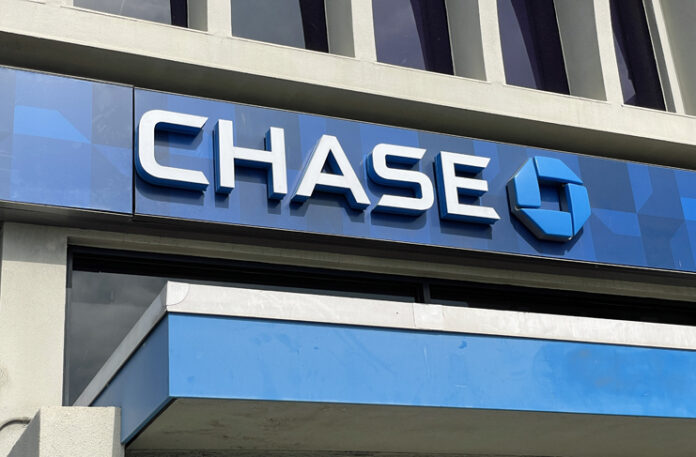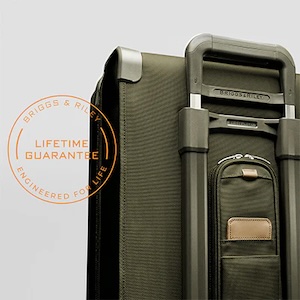TravelingForMiles.com may receive commission from card issuers. Some or all of the card offers that appear on TravelingForMiles.com are from advertisers and may impact how and where card products appear on the site. TravelingForMiles.com does not include all card companies or all available card offers.
Other links to products and travel providers on this website will earn Traveling For Miles a commission that helps contribute to the running of the site. Opinions, reviews, analyses & recommendations are the author’s alone and have not been reviewed, endorsed, or approved by any of these entities. Terms apply to all credit card welcome offers, earning rates and benefits and some credit card benefits will require enrollment. For more details please see the disclosures found at the bottom of every page.
After a brief period marked by guesses and leaked information, we now know what the “refreshed” Chase Sapphire Reserve® Card will look like when it launches on 23 June, and after having now had time to carefully consider what the card will be offering, I don’t think that this is a card for me … at least not right now.
The refreshed Sapphire Reserve
In brief*, this is what the new look Chase Sapphire Reserve® Card will offer:
New annual fee: $795
New authorized user fee: $195 per card
New earning rates:
- Travel booked through Chase Travel – 8 points/dollar
- Lyft spending (through 30 September 2027) – 5 points/dollar
- Flights and hotels booked direct – 4 points/dollar
- Worldwide dining (including take out/delivery) – 3 points/dollar
- All other eligible purchases – 1 point/dollar
New point redemption values:
- Up to 2.0 cents/point via “Points Boosts” promotions through Chase Travel.
- 1.0 cents/point through Chase Travel on bookings not eligible for “Points Boosts”.
Key credits
- $300/year travel credit
- Global Entry/TSA PreCheck credit up to $120 every 4 years.
- $250 credit every 6 months for “The Edit” hotels spending.
- $150 credit every 6 months for spending made at Sapphire Reserve “Exclusive Tables” restaurants.
- $150 credit every 6 months for StubHub spending.
- $10/month Lyft credit.
- $10/month DoorDash credit (for non-restaurant spending)
- $5/month DoorDash credit (for restaurant spending)
Key benefits
- Free Apple TV subscription
- Free Apple Music subscription
- Priority Pass Select membership (no restaurants but 2 guests allowed)
- Access to Sapphire Lounges (+2 guests)
- Access to Air Canada Maple Leaf Lounges (no guests)
- Primary rental car cover
- Excellent travel delay/interruption/cancellation protection
Benefits when you spend at least $75,000 on the card:
- IHG One Rewards Diamond Elite status
- Southwest A-List Elite status
- $500 Southwest credit
- $250 “Shops at Chase” credit.
*These are the key features. I haven’t covered every feature as, frankly, the ones not mentioned are superfluous to this discussion.
Using the credits and benefits to lower the cost
For a card to fit well into my wallet it needs to make financial sense, and by “financial sense” I mean that the benefits that the card offers and that I’ll use have to cover the annual fee.
Also, the benefits that I plan to use to help offset the annual fee must be benefits that make a genuine positive difference to my spending and can’t be benefits that I only use because I want to claw some cash back from Chase.
This is how I see things:
The Chase Sapphire Reserve Card will cost $795/year and from that I can subtract the $300 annual travel credit straight away because that’s a credit I’ll trigger in the blink of an eye.
That leaves me with a net cost of $495/year.
The next obvious credit to account for is the Apple Music credit.
As I already have an Apple Music subscription and as I would continue that subscription whether or not a credit card was covering the cost, this is a valid discount for me to account for (the Apple TV subscription is not a valid discount for me as I don’t currently have an Apple TV subscription and had no plans to get one before this credit was announced).
Apple Music currently costs me $109/year, so that would take the net cost of holding the card down to $386.
This is where things get tricky as we now hit some of the benefits/credits which I don’t need (or value).
- I already have more Priority Pass memberships than I need, so the membership that comes with the Chase Sapphire Reserve® Card is unnecessary.
- I already hold a card that will give me access to the Sapphire Lounges (the Ritz-Carlton™ Credit Card) so I don’t need a second card that does the same (besides, the Ritz-Carlton™ card gives me unlimited guests while, unless something has been quietly changed, the Sapphire Reserve will give me just two).
- I already hold three cards which give me a Global Entry/TSA PreCheck credit every four years so I don’t need the Chase Sapphire Reserve® Card to give me another one.
- I don’t feel the need to pay someone to bring me cold food that was once hot or to bring me anything else that DoorDash delivers, so the two DoorDash credits are irrelevant to my calculation.
- I already hold three cards which give me primary rental car cover and two cards which offer me great travel protections, so as nice as it is that the Chase Sapphire Reserve® Card offers all of these, they’re not worth anything extra to me.
- I can’t remember the last time I flew with Air Canada so Maple Leaf Lounge access means very little to me.
- I have absolutely no interest is spending $75,000 in a single year on the card so the extra benefits that the card offers at this milestone are irrelevant (besides, I hardly ever fly with Southwest and IHG is my fourth choice hotel chain, so even if I did spend $75k on the card these benefits wouldn’t really move the needle much).
- To date, just about all my Chase Ultimate Rewards Points have been converted to World of Hyatt Points, so as I’m not interested in playing Chase’s game and hoping that a booking I’d like to make will qualify for its new “Points Boosts” promotions, the fact that holders of the Sapphire Reserve may or may not get 2.0 cents/dollar value when booking through Chase Travel means very little to me.
Ok … so that still leaves me with a net outgoing of $386/year and just the following credits to consider:
- The Edit hotels credits.
- The Sapphire Reserve Exclusive Tables restaurant credits.
- The StubHub credits.
For some people, these will work well. For me, not so much.
Firstly, you have to book a 2-night stay to trigger one of the Edit credits and the list of hotels that qualify for these credits is disappointingly small (far smaller than the Amex Fine Hotels & Resorts list) and only really includes hotels that are considerably more expensive than the hotels I usually stay at (once I see prices hit $700/night I start to wince!)
As my travels over the past few years haven’t taken me to many of the hotels on the Edit list, and as I can’t see any reason for that to change going forward, I can’t use these credits to mentally discount the cost of holding the Chase Sapphire Reserve® Card.
Secondly, the number of restaurants at which the Sapphire Reserve Exclusive Table credit can be used is laughably short, and as I’m not in the habit of allowing a credit card credit to dictate where I go to eat, I can’t see these credits being of any guaranteed use.
The key thing here is that I’m not about to go seeking out hotels and restaurants at which the Sapphire Reserve credits can be used just to get some cash back from Chase. Just thinking about doing that depresses me!
Thirdly, while I may get some use out of the StubHub credits, it’s far from a slam dunk. I already have access to tickets to the teams I’m interested in watching, and while there’s a chance that I may need to use to StubHub to purchase a few more, the fact that there’s genuine doubt in my mind as to how often I’ll get to use these credits (if at all) means that I can’t use the value of these credits to lower the net cost of holding the Chase Sapphire® Reserve Card.
So where does that leave me?
Ah, yes. I’m still at a net cost of $386/year, and all that I really have left to consider is the card’s earning rates.
Using the earning rates to make the card worthwhile
I have to admit that some of the refreshed earning rates look interesting, but are they’re interesting enough to make a material difference to my decision right now?
I already earn 5 points/dollar on flights booked directly with airlines courtesy of the Platinum Card® from American Express, so while the 4x offered on the same spending by the Sapphire Reserve is strong, it doesn’t beat what I already have access to.
The 8 points/dollar on hotels booked through Chase Travel is of no interest to me as Chase Travel bookings don’t qualify for elite credits or elite status benefits and will not earn me points in any of the major hotel programs.
Sure, if I’d like to book an independent property, a boutique hotel, or a property in a chain whose loyalty program I don’t value, then I could consider Chase Travel, but then we crash into the issue of Chase Travel often charging more than I’d pay if I booked directly, and that’s a mess I don’t want to have to deal with.
The 3 points/dollar on worldwide dining is undoubtedly a good earning rate to be offered, but I already earn 3 points/dollar whenever I eat out courtesy of my $95/year Chase Sapphire Preferred® Card, so I can’t use this to justify the Sapphire Reserve.
So, what looks good?
For me, the most tempting earning rates that the Sapphire Reserve Card offers are the 8 points/dollar on flights booked through Chase Travel and the 4 points/dollar for bookings made directly with hotels.
Generally, I’m not a fan of booking flights through 3rd parties as I don’t like having to deal with 3rd parties when things go wrong, but for 8 points/dollar, my opinion on this could be shifted.
The question I have is how often will I actually be able to do this?
A lot of the more expensive flight bookings that I make have complicated or tricky itineraries which often can only be booked by going through an airline directly or by using an OTA which has its systems set up to deal with such bookings, and I’m not convinced that Chase Travel will be up to this.
I would be able to push all of my more straightforward bookings through Chase Travel, but would the points earned from these bookings be enough to make a difference to my calculations? I’m not sure.
The 4 points/dollar earned for bookings made directly with hotels is strong, and while it wouldn’t be enough to persuade me to pass up the 4 points/dollar that my World of Hyatt credit card earns me on Hyatt stays (because spending on the Hyatt card also earns me elite status credits), I’d happily use the Sapphire Reserve on most other hotel bookings.
The problem here is that I already hold the Ink Business Preferred® Card which earns me 3 points/dollar on all travel bookings and only costs me $95/year, so is the extra 1 point/dollar that the Sapphire Reserve would earn me on hotel bookings really a big deal?
Possibly. It represents a 33% boost in potential points earnings and that’s not to be ignored, but given that most of my hotel stays are with Hyatt (for the time being), the number of extra points that I may earn from hotel bookings paid using the Sapphire Reserve Card is unlikely to be material, and that’s a problem.
Based on all of the above, I can’t really see how I can make a compelling argument which says that the earning rates offered by the refreshed Chase Sapphire Reserve® Card make paying $386/year (net) a good idea.
Other cards are the problem
The cards that I hold which are making it incredibly hard to justify the expense of the Chase Sapphire Reserve® Card are these four:
- The Ritz-Carlton™ Credit Card
- Priority Pass Select membership with unlimited guests
- Primary Auto Rental cover
- Strong travel protections
- Global Entry/TSA PreCheck credit
- Sapphire Lounge access with unlimited guests
- The Ink Business Preferred® credit card
- 3 points/dollar on all travel
- Primary Auto Rental cover
- The Chase Sapphire Preferred® Card
- 3 points/dollar on worldwide dining
- Primary Auto Rental cover
- The Platinum Card® from American Express
- 5 points/dollar on spending made directly with airlines (on up to $500,000 of spending and 1 point/dollar thereafter – terms apply)
- Priority Pass Select membership
- Primary Auto Rental cover (with a small co-pay)
- Strong travel protections
- Global Entry/TSA PreCheck credit
Combined, the benefits and earnings rates that these cards give me match or exceed most of what the Chase Sapphire Reserve® Card would offer and as things stand, I have no trouble justifying the annual fee of the first three and I can make a pretty solid argument for why the Platinum Card works for me as well.
More importantly, I can claw back the annual fees of first three cards very easily and without having to jump through any hoops or having to remember to trigger one or more credits every week/month/half-year/year.
The Platinum Card makes it considerably trickier (lots and lots of hoops to jump though), but it still just about works for me.
While I hold all four of these cards, I’m going to find it very hard to justify holding the Chase Sapphire Reserve® Card, so the only way it may fit in to my wallet would be if it replaced one of these four cards.
Straight away I can say that I’m not giving up the Ritz-Carlton™ Card, the Ink Business Preferred® Card, or the Chase Sapphire Preferred® Card because they’re far too useful to me (the fact that the Chase Sapphire Preferred® Card charges $0 for authorized user cards is great) and they cost me nothing (net) to hold.
That only leaves the Platinum Card® from American Express and, as things stand, I think that I would be putting too many eggs in the Ultimate Rewards basket if I gave that up in an attempt to make the Sapphire Reserve fit into my wallet.
I already collect Ultimate Rewards Points on a lot of my spending and if I gave up the Platinum Card for the Sapphire Reserve, I’d be cutting off my biggest source of Amex Membership Rewards points in return for yet more Ultimate Rewards points and right now, that’s not something I’m interested in doing.
The caveat
I never say “never”, and as you may have already noticed, I’ve been careful not to rule anything out.
I’ve been deliberately using phrases like “at least for now”, “right now”, and “as things stand” throughout this article, and there’s a very good reason for that.
American Express has told us that it plans to refresh its Platinum Card collection at some point later this year and the general consensus is that annual fees will be increasing.
Should this happen and should Amex make it even more difficult for me to get value out of the Platinum Card (by adding more and more credits that are hard to maximize), I will probably decide that it’s time for the card to be culled.
We’ve already been warned that the Amex Platinum refresh will be done with a view to make it more attractive to Gen Z (an interesting idea when you consider that we’re forever being told by the younger generations that they have no money thanks to the older generations), and as Gen Z and I seem to have very little in common when it comes to what we spend our money on, I’m going to assume that whatever Amex has planned for the Platinum Card will not have me jumping for joy.
If I cull the Platinum Card, another card will have to take its place, and whichever card that is will probably have to be one which gives me strong earnings on air travel and one which gives me great travel protections at the same time. Right now, the Chase Sapphire Reserve® Card is probably in pole position to fill that gap.
I’m not saying that if my Platinum Card goes I’ll definitely fill the gap with the Sapphire Reserve – I’m still underwhelmed by most of the credits that the refreshed card offers – but without the Platinum Card I’d have to ask myself if 4x (and a little 8x) on flight bookings + the occasional 4x on hotel bookings + excellent travel protections are, together, worth $386/year to me?
If Chase throws in a great welcome offer and lets me keep my Sapphire Preferred Card as well, the answer could be yes.
Bottom line
Having looked through everything that we’re told the refreshed Chase Sapphire Reserve® Card will offer when it launches on 23 June 2025, I can’t see how, currently, I could justify the card’s $795 annual fee.
For some people, the new earning rates and the new credits will probably work well and if you’re in that group of people, I’m genuinely happy for you.
For me, however, the card is not right at this point in time.
I have little appetite for more hoop jumping in a bid to claw back a card’s annual fee and I already have some truly excellent cards that cover me for most of what the Chase Sapphire Reserve® Card offers so, for now, I’m staying on the sidelines.
If, however, one or more of my existing cards gets “enhanced”, that could change how I see things and the refreshed Chase Sapphire Reserve® Card may come back into play.
What do you think about this new-look card? Will it work for you or is it a coupon book too far?




















Thank you Ziggy for this excellent assessment. Value can be relative (eg compared to Amex Plat) or absolute and both can factor into the value equations. Benefits and coupon credits aside, would the 6-figure SUB change the year 0 calculus for you? Like many, I churn the AMEX plat flavors at less than .004/point without regard to the “credits”.
I don’t really churn, but if the refreshed CSR was to offer me 100,000 bonus points as a welcome offer (which I value at $1,500), that would go a long way to persuading me to try it out for a year … especially if the Platinum Card becomes an even bigger coupon book with an even bigger price tag.
How do you justify the Chase Sapphire preferred annual fee while still holding on to the Ritz-Carlton card?
For the RC card: I use the $300 of airline credits with ease, I enjoy a nice stay at a good Marriott courtesy of the Free Night Certificate, and I have two authorised users which cost me nothing and who get to enjoy a number of the card’s benefits (including their own Priority Pass memberships).
For the Sapphire Preferred: The net annual fee for me is $45 as I use the $50 hotel credit that the card offers and I’m happy to pay that to (a) enjoy 3x on worldwide dining and (b) to be able to give the card to an authorised user who also earns me 3x on all their dining.
I’m still stuck about $450+ on this card. I really wasn’t getting great value out of it prior to this and I also have Amex Gold and Platinum so the earning rate isn’t any better. Mine just renewed so I’ll drop it by renewal next year.
At least you’ll have almost a year to play around with the new benefits/earnings without paying extra. That should give you plenty of time to decide how useful (or not) the card now is to you.
You said the Platinum Card® from American Express offers primary auto rental coverage, which is not true. It is secondary.
Also, this card offers Strong travel protections, but only if you charge the whole amount in full, unlike CSP and CSR, which is good even with just the taxes. Yes, it gives 5% on airfare, but then, since most of my airline purchases are through points so I kind of find it hard to use it instead of CSP and let go of travel protections.
It’s primary for CA residents who pay ~$16/18 co-pay (I’m a CA resident) and, I think, you can get a similar (if a little bit more expensive deal) if you’re a resident of other states.
I’ve now added the co-pay bit to the article to avoid confusion.
I’m keeping it along with my Amex Platinum, Amex Gold and 12-15 other cards. I’m not sure I got full value to offset the $550 but liked the travel insurance and Sapphire Lounge access. At $795 I likely will use the Edit credit at least once a year (I always use the Amex FHR/Hotel Collection credit) and will definitely go to 2 of the restaurants on the list for credits. You say the credit card doesn’t dictate where you eat but when you can spend $50 at Outback or $200 at Steak 48 for the same out of pocket cost it is a no brainer IMHO. Also, frankly the $245 increase in fees doesn’t matter to me. I spend more than that on a nice meal and am not someone that has to get full value from to offset the AF. Understand that doesn’t mean I don’t get value from the card but value other things like flexibility, lounge access and insurance coverage as much as dollars direct back to me.
IMHO people that have to save enough to offset the AF frankly shouldn’t be having high end cards since they are not the intended audience and clearly can’t afford them.
Have the CSR since start.
It’s been easy to make up for the annual fee, even after the last increase.
But now it looks like it’ll be a deal breaker.
To be funneled into downtown ‘high-class’ restaurants is not only undignified, but that semi-annual credit of $150.00 will barely take care of the completely degenerated tipping landscape plus your valet parking fees 😉 (excuse the sarcasm , but it really is all positively NUTS !!).
Plus, to study all the rules to make the card worth the $795.00 annual fee, is a stupid waste of time. Chase allegedly lost big with this card in the beginning … sorry !! …, and the prediction would be that they will again.
People who are willing to pay this kind of annual fee don’t have the time and the nerve to futz around with travel portals that they must go through etc. etc.
It’s not only a question of offsetting the AF, but it’s also a matter of earning power. This is why I’ve never bothered to get an Amex Plat, as the only bonus category is 5x with airlines (which I get with Citi Prestige) and the 5x on hotels is only with prepaid hotels thru Amex Travel (an OTA). I’m content with having the CSP, and don’t need to jump through all the hoops required to make the purchases needed to trigger the credits to offset the AF.